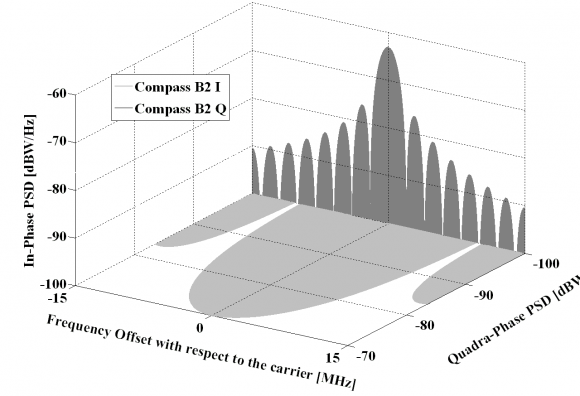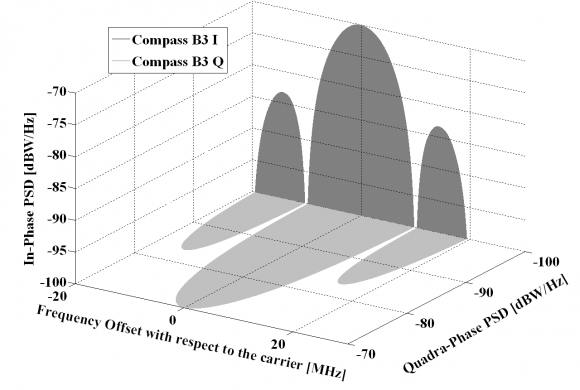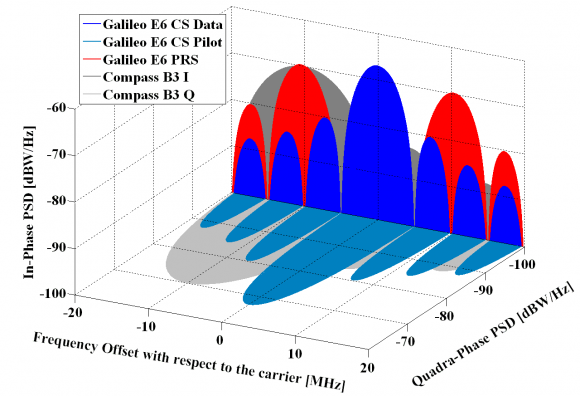If you wish to contribute or participate in the discussions about articles you are invited to contact the Editor
BeiDou Signal Plan: Difference between revisions
Gema.Cueto (talk | contribs) |
Gema.Cueto (talk | contribs) |
||
| Line 24: | Line 24: | ||
To conclude some technical characteristics of the BeiDou B1 signals are given next: | To conclude some technical characteristics of the BeiDou B1 signals are given next: | ||
{| class="wikitable" style="text-align: | {| class="wikitable" style="text-align: left; width: 600px; height: 200px;" | ||
|+ Multiplication table | |+ Multiplication table | ||
|- | |- | ||
Revision as of 09:23, 15 October 2019
| Fundamentals | |
|---|---|
| Title | BeiDou Signal Plan |
| Author(s) | J.A Ávila Rodríguez, University FAF Munich, Germany. |
| Level | Advanced |
| Year of Publication | 2011 |
Presently, the in-orbit operational BDS satellites providing open services include 5 GEO satellites, 7 IGSO satellites and 21 MEO satellites, which can be further divided as 15 BDS-2 satellites ( 5 BDS-2G, 7 BDS-2I, 3 BDS-2M) and 18 BDS-3 satellites (BDS-3M). In addition to B1I and B2I signals, the B1C and B2a ones have started broadcasting by the BDS-3M satellites[1].
BeiDou B1 Band
The B1I signal is composed of the carrier frequency, ranging code and navigation message. The ranging code and navigation message are modulated on carrier. The B1I signal is expressed as follows[2]:
SjB1I (t) = AB1ICjB1I(t)DjB1I(t)cos(2πf1t + ѰjB1I)
Where:
• Superscript j: satellite number.
• AB1I : amplitude of B1I.
• CB1I : ranging code of B1I.
• DB1I : data modulated on ranging code of B1I.
• f1 : carrier initial phase of B1I.
• ѰB1I : carrier initial phase of B1I.
To conclude some technical characteristics of the BeiDou B1 signals are given next:
| Technical KPI | High Level Description |
|---|---|
| Carrier Frequency | 1561.098 MHz |
| Modulation Mode | Binary Phase Shift Keying (BPSK) |
| Polarization Mode | Right-Hand Circularly Polarized (RHCP) |
| Carrier Phase Noise | Third-order phase locked loop with 10 Hz one-sided noise bandwidth |
| Received Power Levels on Ground | -163 dBW (measured at the output of a 0 dBi RHCP user receiving antenna when the satellites are above a 5-degree elevation angle) |
| Signal Multiplexing Mode | Code Division Multiple Access (CDMA) |
| Signal Bandwidth | 4092 MHz (centered at the carrier frequency) |
| Spurious | Shall not exceed -50dBc |
| Signal Coherence | The random jitters of the ranging code phase differentials between B1I, B2I and B3I shall be less than 1ns (1σ). The random jitter of the initial phase differential between the ranging code and the corresponding carrier shall be less than 3° (1σ). |
| Equipment Group Delay Differential | TGD1 (less than 1ns) |
BeiDou B2 Band
Similar to the B1 band, not all the technical aspects of the BeiDou signals in B2 have been defined yet. Nonetheless a proposed signal waveform has already been submitted to the ITU [Compass ITU Filing] [3]. Next figure shows the spectral details of the studied option.
As also done for the rest of GNSS bands, we show in the next figure all the systems together.
To conclude, some technical characteristics on the BeiDou B2 signals are presented more in detail in the next table:
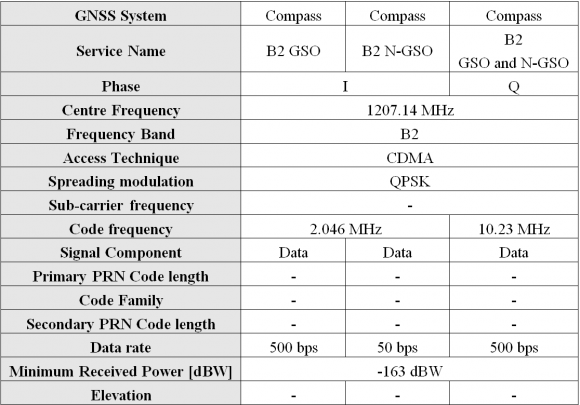 Table 2: BeiDou B2 signal technical characteristics [Compass ITU Filing] [3].
Table 2: BeiDou B2 signal technical characteristics [Compass ITU Filing] [3].
BeiDou B3 Band
Finally, the spectral characteristics of the BeiDou B3 signals are also shown here. Similar to the B1 and B2 bands, not all the technical aspects of the BeiDou signals are defined yet. Next figure shows the Power Spectral densities of the proposed BeiDou signals in B3:
In order to have a better insight on how the Galileo E6 – BeiDou B3 band looks like, the following figure presents all the planned signals together.
To conclude, some technical characteristics on the BeiDou B3 signals are provided next [Compass ITU Filing] [3].
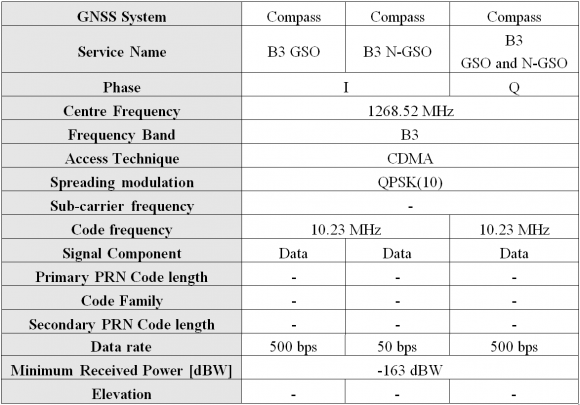 Table 3: BeiDou B3 signal technical characteristics [Compass ITU Filing] [3].
Table 3: BeiDou B3 signal technical characteristics [Compass ITU Filing] [3].
References
Credits
The information presented in this NAVIPEDIA’s article is an extract of the PhD work performed by Dr. Jose Ángel Ávila Rodríguez in the FAF University of Munich as part of his Doctoral Thesis “On Generalized Signal Waveforms for Satellite Navigation” presented in June 2008, Munich (Germany)

